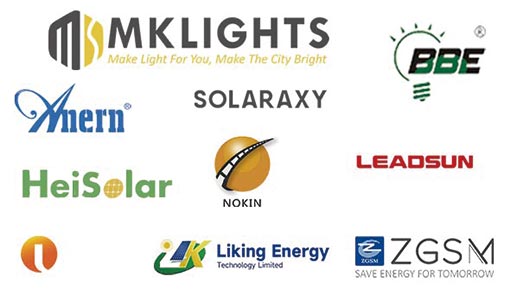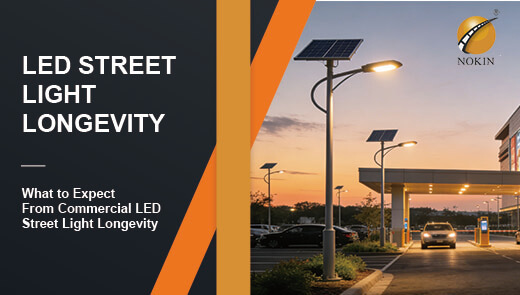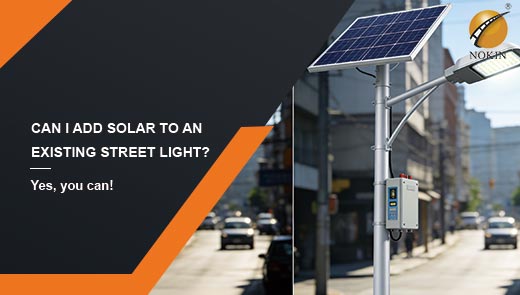Factors Affecting the Lighting Time of Solar Street Lights
In the strategic context of the global push toward achieving “dual carbon” goals, solar street lights, as a typical example of green energy applications, have gained widespread adoption in urban main roads, rural highways, parks, and scenic areas due to their advantages of zero carbon emissions, low maintenance costs, and installation flexibility. The lighting duration of solar street lights serves as a core indicator for evaluating system performance, directly impacting road safety, energy efficiency, and project investment returns.
According to industry research data, the lighting duration of solar street lights with the same configuration can vary by over 40% under different environmental conditions. This significant variation stems from the combined influence of multiple factors. This article will conduct an in-depth analysis from three dimensions: natural environment, core components, and installation and maintenance. By integrating actual measurement data and application cases, it aims to provide a systematic solution for the optimized design of solar street light systems.
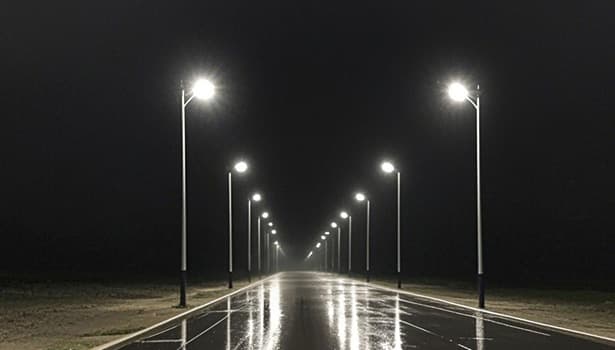
Natural Environment of Solar Street Lights
Sunlight Duration
Solar street lights follow a closed-loop logic of “lighting-power generation-energy storage-illumination,” with sunlight duration being the primary factor determining power generation.
Taking China's solar resource distribution as an example, in Class I regions (such as the Qinghai-Tibet Plateau), annual sunlight hours exceed 3,200 hours, with solar panels generating an average of 2.5 kWh per day, sufficient to support a 60W LED street light for over 40 hours of continuous illumination; In contrast, in Class III regions (such as the Sichuan Basin), annual sunlight hours are less than 1,400, resulting in an average daily power generation of only 1.2 kWh under the same configuration, reducing lighting time to approximately 20 hours.
Seasonal variations also play a role: in the Northern Hemisphere, winter sunlight hours are 30%-40% shorter than summer hours, directly leading to shorter lighting times during winter.
Temperature Effects
High-temperature scenarios
When the ambient temperature exceeds 40°C, the activity of lithium ions inside the battery abnormally increases, and the self-discharge rate rises to 1.8 times that at room temperature. Data from a lithium-ion battery field test shows that after continuous operation at 50°C for 30 days, the battery capacity degrades to 82% of its initial value, corresponding to a 18% reduction in lighting duration. High temperatures also accelerate electrolyte decomposition, causing the battery's internal resistance to increase by 5-8 m Ω annually, resulting in a gradual decline in charge/discharge efficiency.
Low-temperature challenges
At -20°C, the viscosity of the electrolyte increases by more than three times, significantly increasing ion migration resistance. Lead-acid batteries have only 60% of their capacity at -10°C. In a rural project in Northeast China, due to the lack of insulation measures, the winter lighting time dropped sharply from 8 hours to 4.5 hours, severely affecting road safety. Research indicates that for every 10°C deviation from the standard operating temperature of 25°C, the cycle life of the battery is reduced by 20%-30%.
Dust Contamination
Dust accumulation on solar panel surfaces follows an “exponential impact” pattern:
Initial stage (coverage <10%)
Dust particles primarily adhere to the pits on the glass cover, affecting light transmittance by approximately 5%-8%;
Mid-stage (coverage area 10%-30%)
An uneven shading layer forms, causing scattered light to reduce effective light intensity by 20%-30%;
Late stage (coverage area >30%)
Localized shadow effects trigger the “hot spot effect,” causing the temperature of damaged solar cells to suddenly rise by 15-20°C, potentially resulting in permanent damage.
Monitoring data from an industrial park shows that solar panels not cleaned regularly experience a 28% decrease in power generation after three months and a 41% decrease after six months. In regions prone to sandstorms, dust accumulation is more severe, requiring cleaning every 15 days to maintain normal power generation efficiency.
Humidity and Precipitation
The impact of humidity and precipitation on the system manifests in three aspects:
Electrical systems
In environments with humidity exceeding 90% RH, a water film forms on PCB surfaces, causing insulation resistance to drop below 1 MΩ, leading to false triggers or short circuits;
Mechanical components
Rainwater seeping into lamp post joints causes metal corrosion. In a coastal region project where no waterproofing was applied, the wall thickness of lamp posts corroded by 23% after one year, posing a risk of collapse;
Battery system
Moist air entering the battery compartment accelerates the sulfation process of the plates, reducing the lifespan of lead-acid batteries by 40% in high-humidity environments compared to dry conditions.
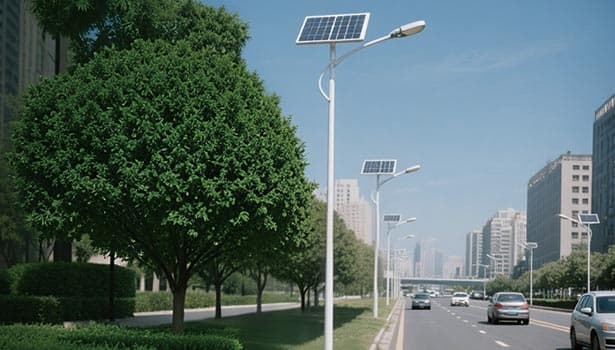
Performance of Battery Systems in Solar Street Lights
Scientific Logic for Capacity Selection
Battery capacity must adhere to the “three-day rainy weather guarantee” principle: For example, a 60W streetlight with an average daily power consumption of 0.72kWh can be equipped with a 12V 100Ah battery (1.2kWh energy storage) to meet the lighting needs during a three-day rainy period. However, the following factors must be considered in actual selection:
- Temperature reduction factor: 0.6 at -10°C and 0.8 at 40°C;
- Discharge depth limit: Lead-acid batteries are recommended to be ≤70%, and lithium batteries ≤80%;
- Safety redundancy factor: Typically, a 20% capacity buffer is reserved.
Quantitative Laws of Battery Aging
The degradation curves of different battery types show significant differences:
- Lead-acid batteries: Cycle life of 300–500 cycles, with capacity degradation of 15–20% in the first year and dropping to 60–70% by the third year;
- Lithium-ion batteries: Cycle life of 1,000–1,500 cycles, with capacity retention >90% in the first two years, dropping to 75–80% by the fifth year.
Performance of Solar Panels in Solar Street Lights
Comparison of Solar Panel Technical Parameters:
|
Type |
Conversion Efficiency |
Temperature Coefficient (%/°C) |
Degradation Rate (First Year) |
|
Monocrystalline Silicon |
22%–25% |
-0.32 |
<2.0% |
|
Polycrystalline Silicon |
18%–20% |
-0.40 |
<2.5% |
|
Thin-Film Battery |
12%–15% |
-0.25 |
<1.5% |
In the early morning and evening when light is weaker, monocrystalline silicon solar panels can generate 15%-20% more electricity than polycrystalline silicon panels due to their higher low-light response capability. A mountain road project used 25% efficiency monocrystalline silicon panels, which extended lighting time by 1.8 hours in rainy weather compared to the original 18% polycrystalline silicon panel configuration.
Precise Calculation of Installation Angle
Optimal tilt angle calculation must consider latitude and seasonal factors:
- Annual average optimal tilt angle ≈ local latitude ±5° (south-facing in the Northern Hemisphere, north-facing in the Southern Hemisphere);
- Winter optimized tilt angle = latitude +15°, summer optimized tilt angle = latitude -10°.
In a project in a region at 30° north latitude, when installed at the annual average tilt angle of 30°, the solar panels received an irradiance of 820 W/㎡ at noon in winter. After adjusting to 45°, the irradiance increased to 950 W/㎡, resulting in a 15% increase in power generation and an additional 1.2 hours of lighting time.
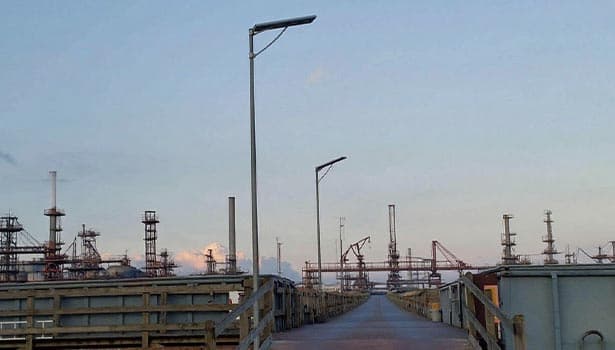
Performance of Lighting Control Components in Solar Street Lights
Key Considerations for Selecting LED Light Sources
Balancing LED luminous efficacy and lifespan is critical:
- For streetlights above 60W, chips with luminous efficacy of 150lm/W or higher are recommended, with light decay ≤30% over 10,000 hours;
- Color temperature selection should consider environmental requirements: urban roads recommend 4000-4500K warm white light, while rural roads can use 5000-5500K cool white light;
- Lens beam angle should be adjusted based on road width: 120° for dual-lane roads and 90° for single-lane roads.
In a major road renovation project in a certain city, replacing 100W sodium lamps with 60W LED lamps increased luminous flux from 9000lm to 10800lm, reduced energy consumption by 40%, and extended lighting duration from 8 hours to 12 hours.
Optimization of Smart Controller Strategies
Modern MPPT controllers are 15%-30% more efficient than traditional PWM controllers. Their time control strategies can be categorized as follows:
- Light control + time control mode: After sunset, full power for the first 4 hours, then reduced to 50% power for the next 4 hours;
- Power Gradient Mode: Dynamically adjusts brightness based on battery charge level—100% power when charge >70%, 75% power when 50%-70%, and 50% power when <50%;
- Seasonal Adaptive Mode: Automatically adjusts on/off times via GPS positioning—delays on time by 1.5 hours on the summer solstice and advances by 1 hour on the winter solstice.
A smart streetlight project using an MPPT controller combined with a power gradient strategy extended lighting time by 2.3 hours compared to traditional control methods during continuous rainy weather.
Installation and Maintenance System of Solar Street Lights
Site Selection Survey Key Points
- Shade Analysis: Use a laser rangefinder to measure shadows from surrounding buildings to ensure solar panels are unobstructed from 9:00 AM to 3:00 PM;
- Wind load calculation: In coastal areas, lamp posts must be designed to withstand a Category 12 typhoon (wind speed 32.7 m/s); in inland areas, they must meet Category 10 typhoon standards;
- Geological testing: Soft soil foundations require concrete reinforcement, with a foundation depth ≥1.5 m and dimensions ≥0.8 m × 0.8 m.
Angle Calibration Technology
Professional inclinometers are used for installation angle calibration:
- Horizontal deviation ≤ 0.5°, vertical deviation ≤ 1°;
- When installing multiple lights, maintain angle consistency with a deviation ≤ 2°;
- After installation, use a solar radiation meter to measure irradiance, with a deviation from the theoretical value < 5%.
Preventive Maintenance System
- Solar panel cleaning: Use deionized water + neutral detergent; do not use hard tools to scrape;
- Battery testing: Measure open-circuit voltage and internal resistance; lead-acid battery specific gravity must be maintained between 1.26–1.28 g/cm³;
- Controller parameter verification: Check whether charge/discharge thresholds and time settings align with seasonal changes;
- Light sensor sensitivity testing: Use an adjustable light source to simulate day/night cycles; trigger error must be <500 lux.
Fault Warning System
Key monitoring indicators for the intelligent operation and maintenance platform:
- Solar panel voltage/current: Normal range should vary linearly with light intensity;
- Battery SOC value: Trigger warning when below 20%, and enforce protection when below 10%;
- Operating temperature monitoring: Activate cooling fan when battery compartment temperature exceeds 55°C;
- Lighting duration statistics: Compare with historical data, and automatically alarm when deviation exceeds 15%.
Environmental Adaptation Solutions
Special Scenario Solutions
- Foggy regions: Use solar panels with a light transmittance >95% nano-coating to reduce fog adhesion;
- Cold regions: Equip the battery compartment with a PTC heating device to maintain a temperature ≥5°C;
- Salt fog environments: Use 316L stainless steel lamp posts with a fluorocarbon coating;
- Dust-prone areas: Install automatic dust removal devices to periodically blow clean the solar panel surfaces with compressed air.
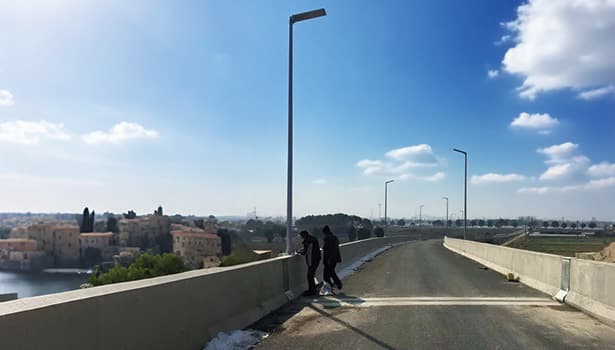
Conclusions and Technical Outlook
The lighting duration of solar street lights is the result of the coupled effects of natural environmental conditions, equipment performance, and engineering implementation. From an energy flow perspective, extending lighting duration requires achieving “maximized light energy capture – efficient energy storage – optimized electrical energy consumption” across the entire value chain. The current industry technology trends are characterized by three major directions:
High-efficiency conversion: Perovskite solar panels have achieved a laboratory efficiency of over 32%, with commercial application expected by 2025;
Smart management: AI algorithms combined with weather forecasts can dynamically adjust lighting strategies 72 hours in advance, improving energy efficiency by 15%-20%;
Integrated innovation: Photovoltaic-storage-lighting integrated design, combined with smart pole platforms, achieves optimal allocation of energy resources.
For project implementers, establishing a full-cycle management system encompassing “environmental assessment, scheme design, precise construction, and intelligent operation and maintenance” is essential to fully unlock the technical potential of solar street lights. As carbon neutrality goals advance, solar street lights will not only serve as lighting tools but also become foundational nodes in smart energy networks, playing a crucial role in the development of new power systems.

